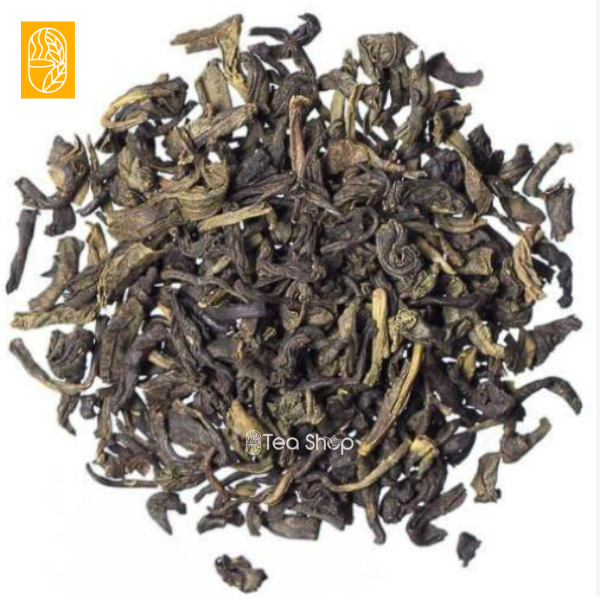Orthodox tea is a type of tea prized for its traditional preparation methods, rich flavors, and numerous health benefits. It is distinct from most commercial teas due to its unique, labor-intensive process and the level of quality control involved, which imparts a distinct flavor and health profile. This article dives into what orthodox tea is, how it is made, its benefits, and why it holds a special place in the world of tea.
What is Orthodox Tea?
Orthodox tea refers to tea produced using traditional methods, where each leaf is carefully plucked, withered, rolled, oxidized, and dried to bring out its unique flavor profile. This method dates back centuries and differs from the “CTC” (Crush, Tear, Curl) process, which is used to make tea bags and is focused more on quantity than quality. Orthodox teas are generally whole-leaf teas, preserving the integrity of the leaves and producing a delicate, nuanced flavor that appeals to tea aficionados.
Orthodox tea can refer to black, green, white, or oolong teas, as long as they are produced through traditional means. Each type of orthodox tea undergoes similar steps but with varying levels of oxidation, drying, and processing times, creating a wide array of flavors and aromas.
The Art of Making Orthodox Tea
The process of making orthodox tea is meticulous and requires time, skill, and an understanding of the tea leaves’ nature. Here are the main steps in the production of orthodox tea:
1. Orthodox Tea Plucking
Orthodox tea begins with hand-plucking the best leaves, usually the bud and two youngest leaves. This is essential to preserve the delicate flavor of the tea and avoid bitterness. Tea pluckers skillfully select these tender leaves, which are rich in essential oils and natural compounds that contribute to the tea’s unique aroma and taste.
2. Orthodox Tea Withering
Once plucked, the leaves are spread out to wither. This step allows the leaves to lose some moisture and become flexible for the next step. The withering process is controlled to last between 10 to 20 hours, depending on the humidity and the type of tea. Withering softens the leaves, preparing them for the rolling process, and activates enzymes that later contribute to oxidation.
3. Orthodox Tea Rolling
Rolling is a critical part of orthodox tea production, as it helps release the essential oils within the leaves. The leaves are gently rolled to bruise them, which exposes the leaves’ inner chemicals and triggers oxidation. This stage determines much of the tea’s flavor profile and texture. Rolling can be done by hand or machine, but in both cases, care is taken not to break the leaves too much, maintaining the leaf’s structure.
4. Orthodox Tea Oxidation
After rolling, the leaves are spread out to oxidize. Oxidation is the natural process where the leaves’ compounds interact with the air, darkening in color and enriching the aroma. Black orthodox tea is fully oxidized, which gives it a robust flavor, while green orthodox tea undergoes minimal oxidation, preserving its fresh, vegetal taste. Oolong tea, which sits between black and green in the oxidation spectrum, is semi-oxidized and combines floral and fruity notes.
5. Orthodox Tea Drying
Once the leaves have oxidized to the desired level, they are dried to halt the oxidation process. The drying stage is essential in preserving the tea’s flavors and making it shelf-stable. Drying can be done using hot air ovens, sun drying, or over charcoal, depending on the tradition and type of tea. Proper drying ensures that the tea retains its freshness and prevents microbial growth.
Our latest and greatest
-
BT-2 Tea
560.00৳ – 5,600.00৳ -
BTRI Green Tea
1,700.00৳ – 3,000.00৳ -
Butterfly Tea
Original price was: 400.00৳ .385.00৳ Current price is: 385.00৳ . -
CD Dust Tea
1,600.00৳ – 3,000.00৳ -
Clone Tea
560.00৳ – 5,500.00৳
6. Orthodox Tea Sorting and Grading
After drying, the tea leaves are sorted based on size, shape, and quality. Whole leaves are often considered the highest quality, while broken leaves, fannings, and dust are used for lesser grades of tea. Sorting and grading also help maintain the aesthetic appeal of the tea, which is essential for premium orthodox teas.
Types of Orthodox Tea
Orthodox tea is a broad category that includes several varieties:
- Orthodox Black Tea: Fully oxidized, resulting in a rich, bold flavor and a reddish-brown color. It is known for its briskness and can be enjoyed with or without milk.
- Orthodox Green Tea: Minimally oxidized to retain its fresh, grassy flavor and high antioxidant content. Green tea is steamed or pan-fried to halt oxidation quickly after rolling.
- Orthodox White Tea: The least processed of all, white tea is made from young leaves and buds that are air-dried without rolling or oxidation, yielding a delicate, mild flavor with subtle floral notes.
- Orthodox Oolong Tea: Partially oxidized, oolong tea falls between green and black tea and is known for its complex, multi-layered flavors that range from floral to fruity.
- Orthodox Yellow Tea: A rare and expensive tea, yellow tea is similar to green tea but has a slower drying process, allowing the leaves to turn yellow. It has a mellow, sweet taste.
The Benefits of Orthodox Tea
Orthodox tea is more than just a treat for the taste buds; it also offers numerous health benefits thanks to the high-quality leaves and traditional processing methods. Here are some of the most significant benefits of drinking orthodox tea:
1. Rich in Antioxidants
Orthodox teas, especially green and white varieties, are rich in antioxidants, particularly catechins. These antioxidants help fight free radicals, reducing oxidative stress and lowering the risk of chronic diseases, such as heart disease and cancer.
2. Improves Heart Health
Studies show that black and green orthodox teas may help improve heart health by reducing blood pressure, lowering cholesterol levels, and improving overall cardiovascular function. The flavonoids in tea are known to improve circulation and reduce inflammation, contributing to better heart health.
3. Enhances Mental Alertness
Tea contains a moderate amount of caffeine and an amino acid called L-theanine, which promotes relaxation without causing drowsiness. This combination improves focus and alertness, making orthodox tea an excellent beverage for maintaining mental clarity and reducing anxiety.
4. Aids in Weight Loss
Green orthodox tea, in particular, is known to support weight loss. The catechins in green tea can increase metabolism and promote fat burning, especially when paired with a healthy diet and exercise. Drinking green tea regularly can support weight management by enhancing fat oxidation and increasing energy expenditure.
5. Promotes Healthy Skin
The antioxidants and polyphenols in orthodox tea protect the skin from aging and UV damage. Regular consumption of tea can help in maintaining skin elasticity and reducing signs of aging, such as wrinkles and fine lines. Additionally, the anti-inflammatory properties of tea can reduce skin irritation and redness.
6. Supports Digestive Health
Orthodox teas contain polyphenols that encourage the growth of beneficial gut bacteria, improving digestion and reducing gastrointestinal issues. Black tea, for instance, has tannins that have been shown to soothe digestive issues, such as diarrhea.
7. Reduces Stress
The ritual of preparing and drinking orthodox tea can be a calming activity, helping to reduce stress levels. The theanine in tea promotes relaxation by inhibiting stress-inducing hormones, which can improve mood and foster a sense of well-being.
8. Boosts Immunity
Orthodox tea, particularly green and black tea, contains bioactive compounds that boost the immune system. The flavonoids and catechins have antimicrobial properties, helping the body fight off infections and maintain a balanced immune response.
Why Choose Orthodox Tea?
The meticulous production of orthodox tea results in a high-quality beverage with a refined flavor profile. Unlike CTC teas, which are designed for quick brewing and bold flavors, orthodox teas prioritize the leaf’s integrity, making it ideal for people who appreciate the intricate flavors of tea.
Additionally, orthodox tea is produced using environmentally sustainable methods. Many small tea estates and cooperative farms focus on organic, traditional farming practices that minimize environmental impact and preserve the quality of the tea. Orthodox tea production also supports the livelihoods of skilled tea workers who bring a wealth of knowledge and expertise to each cup.
Brewing the Perfect Cup of Orthodox Tea
Brewing orthodox tea requires a bit of attention to get the best out of its flavors. Here’s a simple guide to preparing a perfect cup of orthodox tea:
- Use Fresh, Filtered Water: Water quality significantly affects the flavor of your tea. Use fresh, filtered water to avoid any impurities that might alter the taste.
- Measure the Tea Leaves: Generally, one teaspoon of orthodox tea leaves per cup is sufficient. However, this can be adjusted based on your preference for strength.
- Temperature and Brewing Time: The brewing time and temperature will vary depending on the type of orthodox tea:
- Black Tea: Brew at 90-95°C for 3-5 minutes.
- Green Tea: Brew at 80-85°C for 2-3 minutes.
- White Tea: Brew at 75-80°C for 4-5 minutes.
- Oolong Tea: Brew at 85-90°C for 3-4 minutes.
- Steep, Don’t Overbrew: Overbrewing can make the tea bitter. Follow the recommended steeping time to get the most out of the tea’s flavors.
- Enjoy Plain or With Additives: While orthodox tea can be enjoyed plain to appreciate its full flavor, you can also add milk, lemon, or honey to suit your taste.
Conclusion
Orthodox tea is a tea lover’s delight, offering a range of rich, complex flavors and health benefits. The traditional preparation method, attention to detail,













